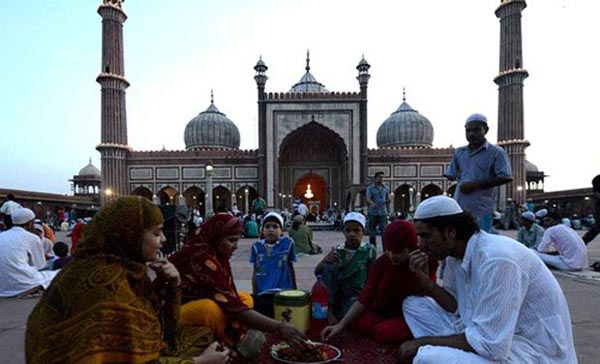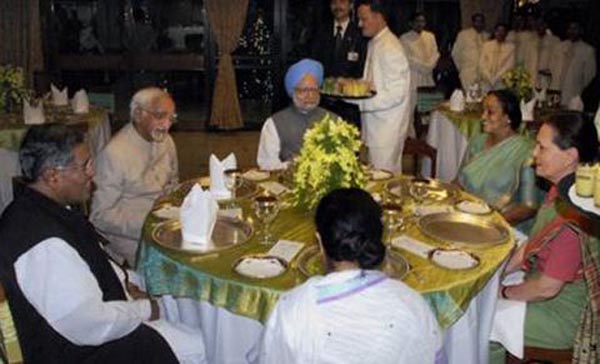
New Delhi: The crescent moon has been sighted over Delhi and the Imam Bukhari has proclaimed the advent of Ramzan. With this the silly season will soon be upon us once again. Ramzan is meant to be a month of piety and generosity. But with our typical innateness we will turn it once again into a season of silly vulgarity. The monsoons have failed. Drought and death stalks vast tracts of the country. The economy is still deep in the trench. But neither the seriousness of the looming crises, nor the predicament of our polity, nor the spirit of Ramzan will impress our leaders.
And so they will be busy with drawing up guest lists, planning menus, hogging more than just headlines and showing us how little they care about the critical issues that confront the nation. Even our newspapers will be swept up by this excitement suggesting that successive Press Pay Commission recommendations have still somehow not decreased their gluttony? In the next few days the main point of excitement for our newspapers will be the triviality of Mani Shankar Aiyar’s guest list or Hamid Ansari’s iftaar spread. One thing I can say about Narendra Modi. I don’t think he will go through the hypocrisy of hoisting an iftaar party. That at this moment seems the only saving grace.

It is not that these parties are without some significance. One thing for sure, it seems to make our leaders more considerate towards each other. Once at Somnath Chatterjee’s iftaar dinner, Mulayam Singh helpfully advised Sonia Gandhi to go easy on the hilsa because of the bones that might stick in her craw. She in turn, it seems, was at her eloquent best when she readily riposted: “ ab main khanton se jujhne ko seekh gayi!”
Sonia Gandhi’s iftaar parties were once the party to be invited to. Not just for the close-up one can get of her delightful dimples, but for the delicious fare of kebabs and biryani that set her apart in a class by herself. A friend who went to her party one year still speaks of the delicious kakori and tunda kebabs served. Tunda kebabs are not called that because they came from a place called that, like Kakori. They are called that because the man who made them had one arm – hence tunda. My friend, the journalist Zafar Agha, tells me that the name came about when journalists who sent for kebabs to go with their hooch at Lucknow’s press club would holler to the waiter: “wo tunde ke yahan se le aana!” And so these kebabs became immortal.
The tradition of political iftaar parties began with the advent of Jawaharlal Nehru as Prime Minister. Nehru used to host one each year at the Congress Party office, which in those early days was at 7 Jantar Mantar Road. It used to be a small gathering of mostly Muslim colleagues, politicos and journalists. The practice was stopped when Lal Bahadur Shastri succeeded him. It was revived in Lucknow by HN Bahuguna in 1974 who as UP’s chief minister began assiduously courting the Muslim vote bank. Then like now, since the state cannot seem to do very much to rid the Muslim masses of their wretchedness, iftaar parties became the means to establish ones secular bonafides. He was the first Hindu maulana. Mulayam Singh only followed after LK Advani sallied forth in his first dieselized rath. Bahuguna’s success apparently rattled Indira Gandhi enough to begin her own in Delhi.
In 1977, after the Janata victory, Chandrashekhar who had a true flair for event management began to put 7 Jantar Mantar to good use with iftaar parties. Morarji Desai, however, made it a point not to attend. As can be expected Manmohan Singh’s parties were famous for a famous Amritsari delight – Kesar Lassi and sweet Amritsari Amriti. Vajpayee, as Prime Minister did his raj dharma by hosting iftaar parties replete with Muslims straight out of the casting office. Muslims with costumes and caps last seen in Satyajit Ray’s Shatranj ke Khilari would crowd around the tables laden with delicious food from Ashoka Hotel and unwashed hands, Hindu and Muslim, would dig into the dishes in a display of brotherhood in gluttony.
The month of Ramzan was ordained in the second year of the hijra after the last of the revelations were made to Prophet Muhammad. This was also the month in which the victorious battle at Badr had taken place. By now the Prophet felt confident to completely break with the Jews. The Jewish fast of ashura on the day of kippur was no longer obligatory. Muslims now began to distinguish themselves in all things from the people of Israel. No more would his followers turn towards Jerusalem for prayer. Ramzan was to be a month of piety, charity and abstinence. After a full day of abstinence the faithful broke their fast with some dates, some salt and water. It seems only keeping with the mores of the times that abstinence and piety were to be replaced by indulgence and extravagance. So the competition between our netas is not any more about what they can do for us, or what they can get us to do for our country, but about how large a spread can they lay out on the table!
Having been to a few of these iftaar parties I can say with the benefit of experience that the food is usually cold and the faithful who seem to be the same lot trucked from party to party, no pun intended, take precedence over us kafirs, when at last the food section is opened for attack. The iftaar party is probably the only time when in the BJP office that Muslims take precedence over the Brahmins. Since the crowd of the faithful is mostly made up of unwashed professionals, and the month long diet heavy on meats and spices adds a certain aroma to the air that travels with them. This air is sought to be drenched with ithar which rather than helping only intensifies the disagreeability of the smells. I have heard it said that the BJP office at 11 Ashoka Road is surreptitiously washed with Ganga jal after the deed is done. One hopes there is no need for that now?
But what about Ramzan, the season of piety and generosity of spirit?


